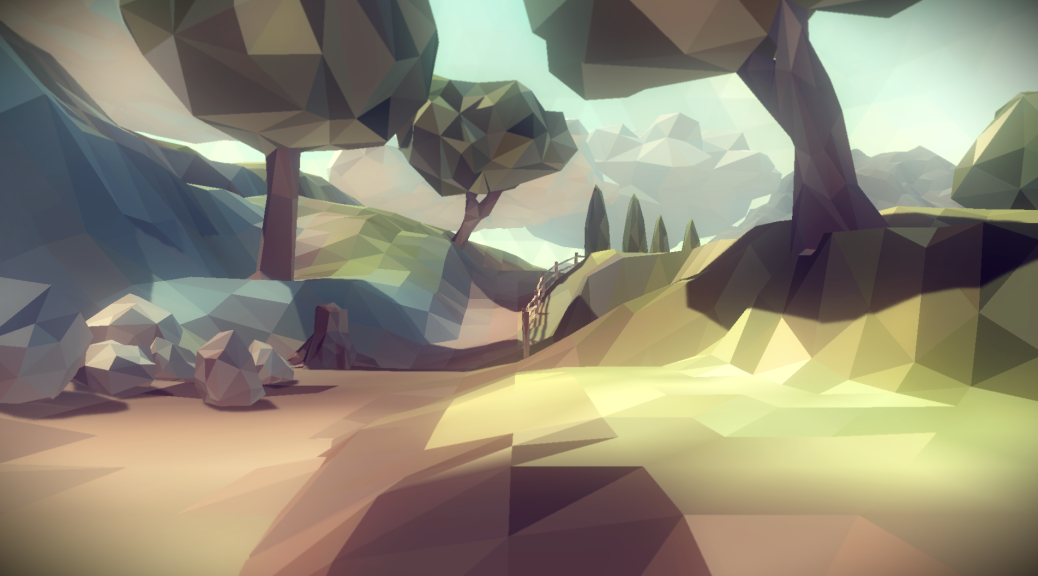Polyworld generates faceted terrains from the familiar Unity Terrain system with a click of a button. Swap back and forth between the Unity Terrain and Polyworld painlessly. Need to adjust the topology or texturing? Just paint on the Unity Terrain and hit the button to update.
Before you dig in, it’s incredibly important you understand how to properly setup your initial Unity Terrain. With certain values, your Polyworld Terrain might be too big, or too high poly. Get an in-depth look on how to properly setup a Unity Terrain by visiting the Terrain In-Depth link.
The biggest thing to understand about terrains is to use only the level of detail you need. There is no need to make terrains too big or too high detail.Tips
- To get more color variation, set your texture tiling to high values instead of low values like we normally do. All the color and value variation that’s in that texture will get transferred into the Polyworld Terrain. I get nice results when I set the texture tiling values as big as my terrain.
- If portions of the Unity Terrain are extremely smooth, the vertex colors on the Polyworld Terrain will not render faceted. Just add some very subtle height variation in those areas and regenerate to fix.
- When making caves, use the terrain as the cave floor, then make a new terrain for the ground above the cave. Consult the demo scene on this is done.
- Terrain Toolkit can be used to create Polyworld Terrains. If you use any script or plugin that edits default Unity Terrains, it will most likely work with Polyworld. If not, contact me and I’ll see what I can do.

